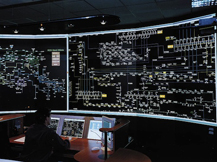How German Solar Has Made All German Electricity Cheaper
 A study finds solar lowered the price of peak electricity in Germany by up to 40 percent.
A study finds solar lowered the price of peak electricity in Germany by up to 40 percent.Solar produced about 3% of industrious Germany’s total electricity, but when it produced it matters more than how much, because of a utility ranking system for putting the most cost-effective power on the grid, called the Merit Order ranking, used in Germany and many EU nations to keep prices low.
The Fraunhofer Institute found that – as a result of the Merit Order ranking system – solar power had reduced the price of electricity on the EPEX exchange by 10 percent on the average, with reductions peaking at up to 40 percent in the early afternoon when the most solar power is generated.
Here’s how the Merit Order works.
All available sources of electrical generation are ranked by their marginal costs, from cheapest to most expensive, with the lowest having the most merit.
The marginal cost is the cost of producing one additional unit of electricity. Electricity sources with a higher fuel cost have a higher marginal cost. If one unit of fuel costs $X, 2 units will cost $X times 2. This ranking is called the order of merit of each source, or the Merit Order.
Using Merit Order to decide means the source with the lowest marginal cost must be used first when there is a need to add more power to the grid – like during sunny afternoon peak hours.
Using the lowest marginal costs first was designed so that cheaper fuels were used first to save consumers money. In the German market, this was nuclear, then coal, then natural gas.
But 2 hours of sunshine cost no more than 1 of sunshine: therefor it has a lower marginal cost than coal – or any source with any fuel cost whatsoever.
So, under the Merit Order ranking of relative marginal costs, devised before there was this much fuel-free energy available on the grid, solar always has the lowest marginal cost during these peaks because two units of solar is no more expensive than one.
(Wind is similarly fuel free, but solar has more impact on the price than wind, because its afternoon production peak mirrors peak utility loads on the grid, while wind’s peak is often at night.) Solar production peaks during the same time as afternoon peak power needs.
The price was reduced by 7.8 Euros (about $10.50) per megawatt-hour, or over 10 cents a kilowatt-hour. Now prices during mid- afternoon peaks on sunny afternoons are actually lower than off-peak power prices in the wee hours of of the morning.
You can return to the main Market News page, or press the Back button on your browser.

